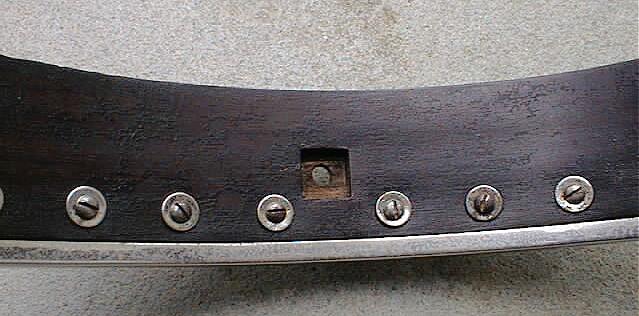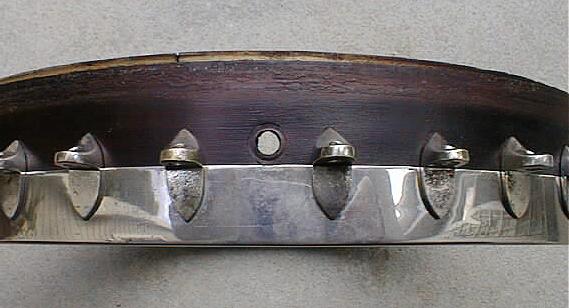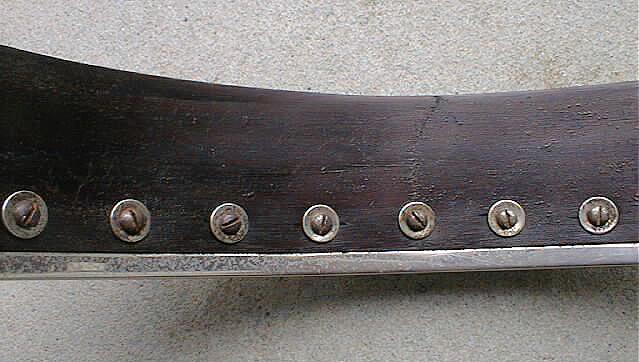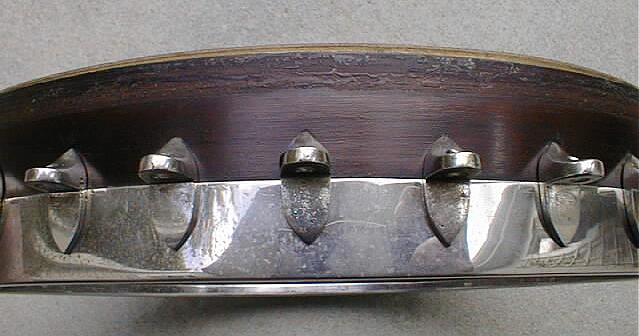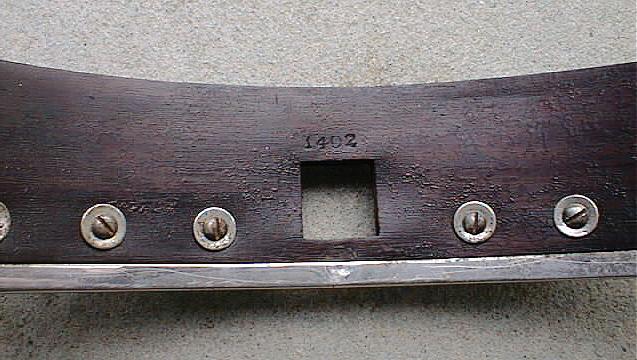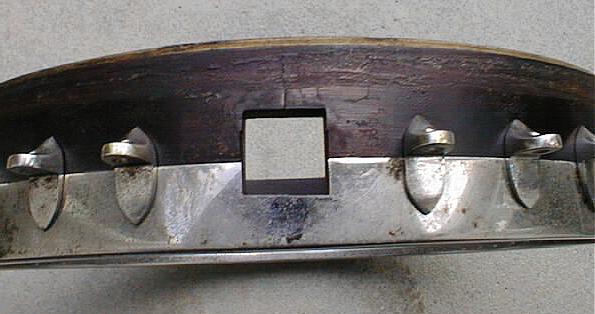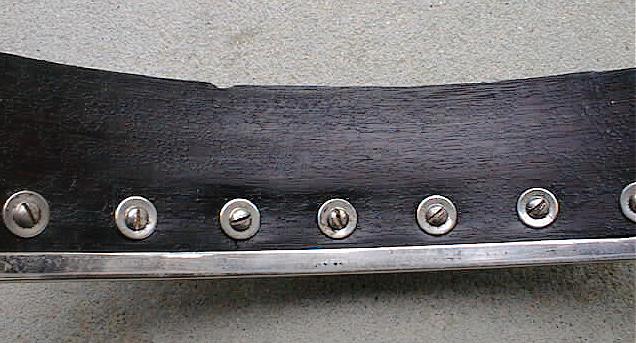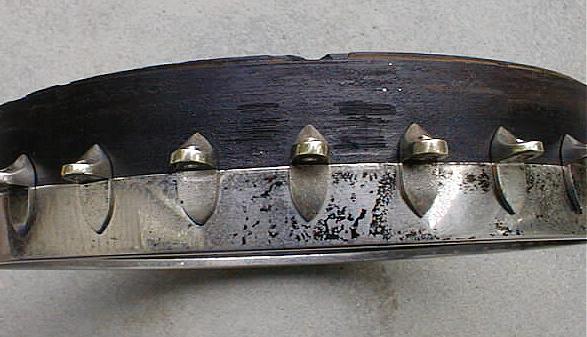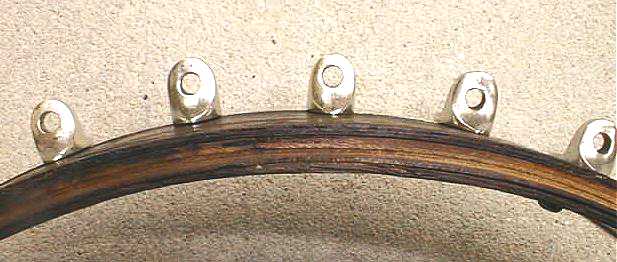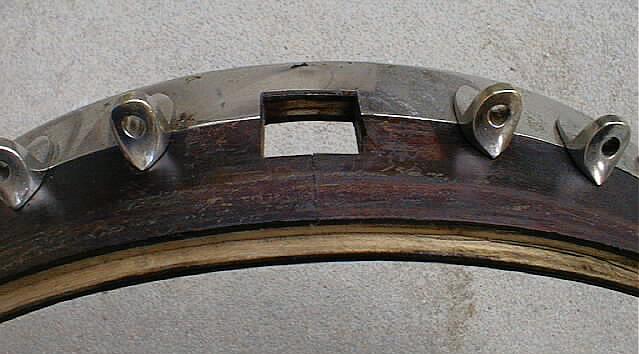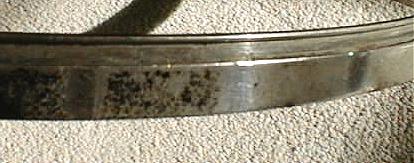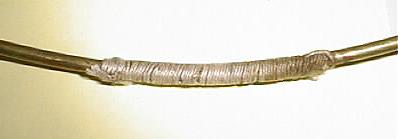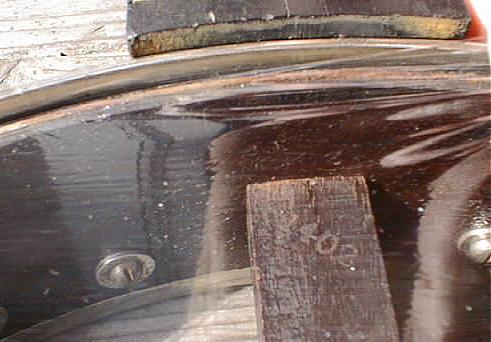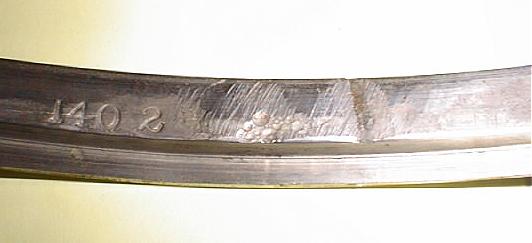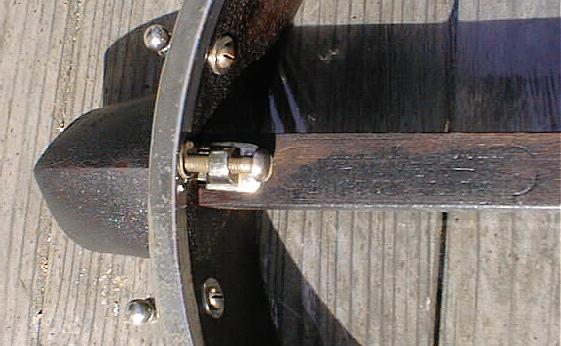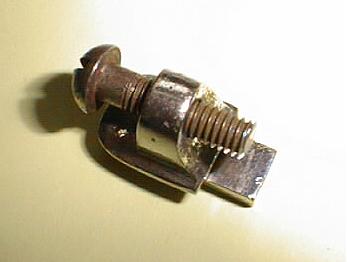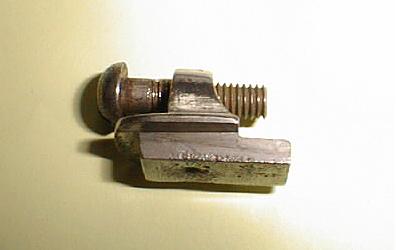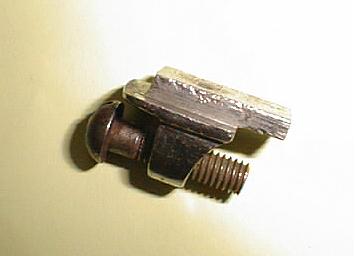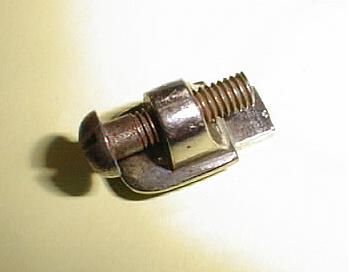Fairbanks & Cole
Clipper
S/N 1402 ca. 1881
--------
The Banjo
This Clipper suffered catastrophic damage in a fire.
This
pot and the stub of the neck are all that
remain. The pot was cleaned up to the extent that the
majority of the chared surface was removed
and the metal and hardware cleaned as shown.
The pot is missing its tone ring. Judging from the
dimensions
of the shelf on the outer top of the wooden
pot it appears that the tone ring was a simple ring,
11 1/2" diameter, formed from a 3/16" diameter rod.
The pot was cleaned and assembled with a piece of
Saran
Wrap in place of the skin head just to
keep it all together and to apply some minor tension
to the cobra hooks.
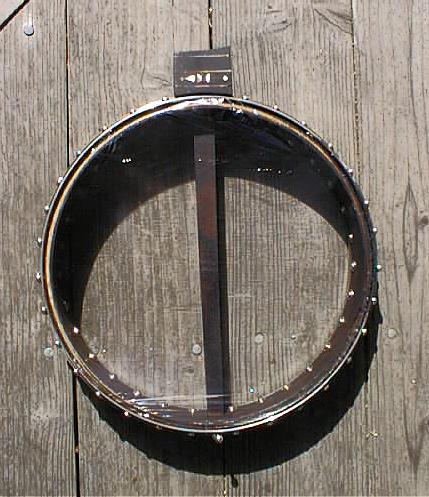
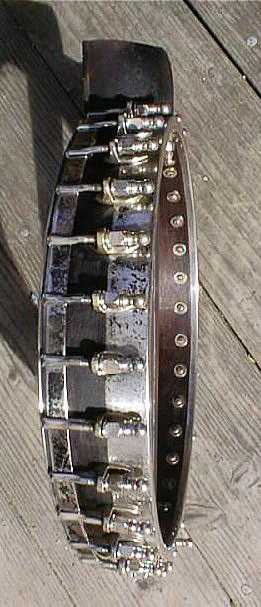
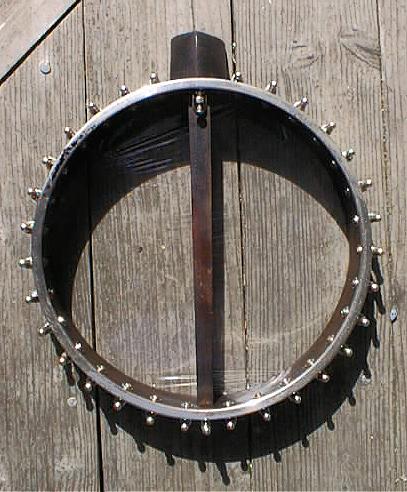
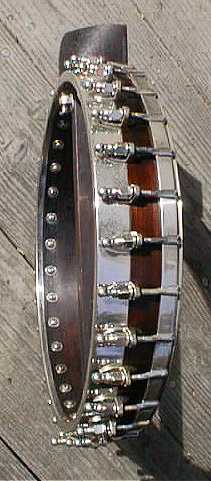
--------
The Neck
The majority of the burned neck was removed leaving
just
this stub. It is interesting to note that the
bore for the dowel stick comes perilously close to the
surface of the heel. If it had been drilled a bit
deeper it would have broken through.
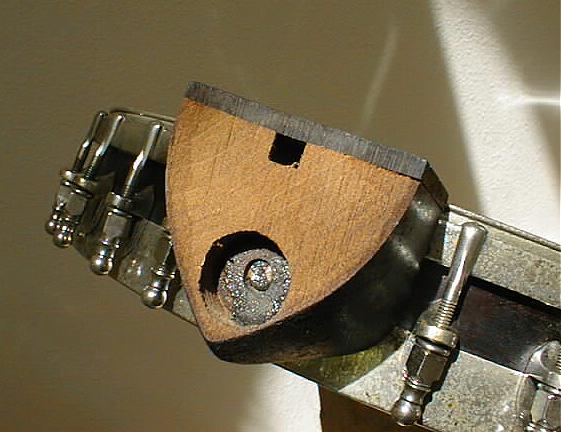
The remaining inlay at the bottom of the neck is an
attractive
and unusual early design.
The neck had flush ivory frets.
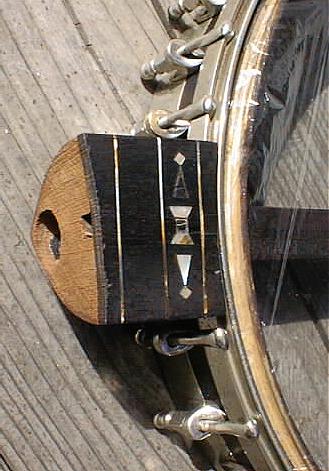
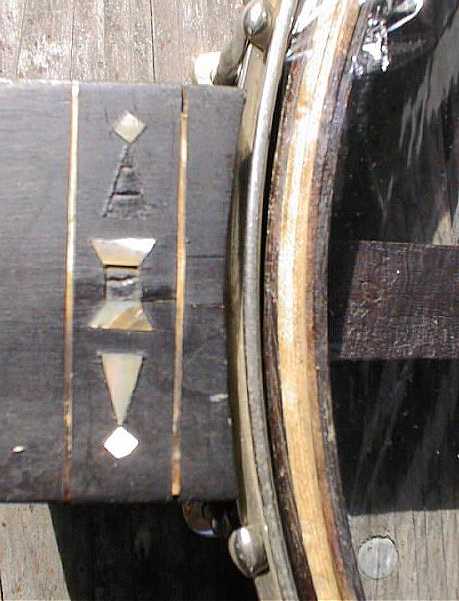
--------
The Pot
The pot was badly burned, particularly on the right
side.
The rosewood inner and outer
laminations on that side have turned largely to charcoal.
